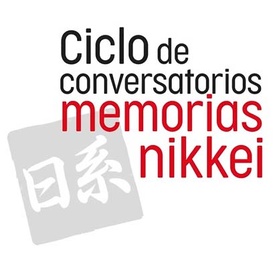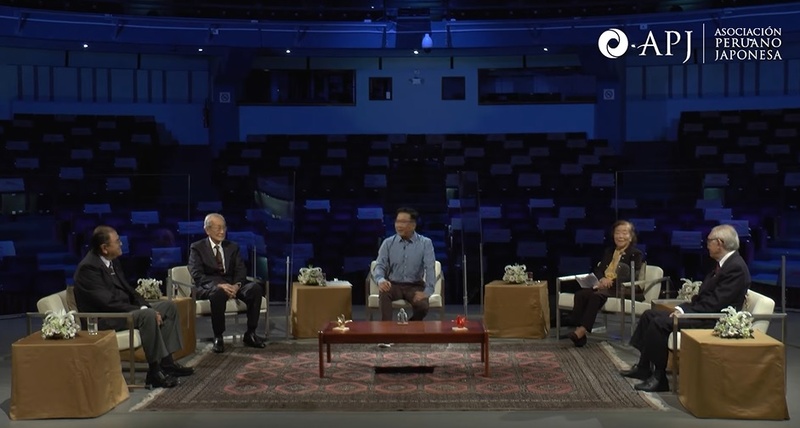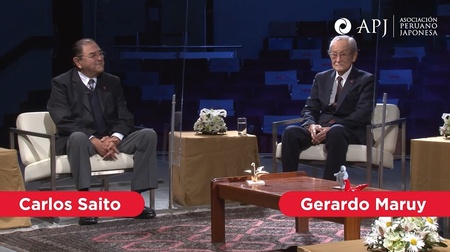
Sueko Noda, a 93-year-old Nisei, remembers that during the looting of Japanese homes and businesses in May 1940, her family was saved from the hordes instigated by the anti-Japanese sentiment of the time thanks to some Peruvian neighbors “such good people who defended us.” ”.
Carlos Saito, 80, relates that his father, an Issei who arrived in Peru on the last ship that docked on Peruvian coasts transporting immigrants under contract in 1923, had a watch shop for which he could not buy spare parts due to discrimination against the Japanese. Luckily, some Peruvian friends helped him by purchasing them in his name.
César Tsuneshige, 86 years old, evokes a Peruvian neighbor who stood up for her family when the authorities, in those times of war, harassed them, taking advantage of her father's vulnerability due to his insufficient command of the Spanish language and his condition of foreign.
For his part, Gerardo Maruy, 92, says that a few days after the looting there was an earthquake in Lima that some Peruvians interpreted as God's punishment for the abuses against the Japanese. The earthquake cooled anti-Japanese animosity.
The four Nisei are protagonists of the first conversation in the series “Nikkei Memories”, organized by the Nikkei Community Research Fund and the Carlos Chiyoteru Hiraoka Museum of Japanese Immigration to Peru.

Throughout an hour and a half of talk, published on YouTube and directed by the artist Haroldo Higa, the quartet shares testimonies, experiences and reflections about their lives, their immigrant parents, the disastrous years of the war, the resurgence of the Peruvian community Japanese culture—grounded in its collective spirit—during the postwar period, among other items related to the history of Japanese immigration.
KNOW US BETTER
The paralysis caused by the coronavirus pandemic has not completely subsided, but life must continue. And life not only continues forward, but also backwards, towards the past. Knowing the history of the community to which we belong brings us closer to our identity and helps shape our path. The past is also future.
With the testimonies of people such as Gerardo Maruy, Sueko Noda, César Tsuneshige and Carlos Saito, the aim is to delve into the origins and development of the Peruvian-Japanese community, as well as immortalize its history.
Jorge Yamashiro, director of the Nikkei Community Research Fund, reveals that “the project was born at the beginning of this year, in a more concrete way, as part of the plan of activities that we wanted to develop in the Peruvian Japanese Association (APJ) in the medium and long term around the history of the Peruvian Nikkei community.”
“Nikkei Memories” is part of a larger initiative with a date of birth before the pandemic.
“We had already developed actions such as the competitive fund of editorial projects on the contributions of the Nikkei community and memories of Japanese immigration, and we wanted to expand the scope through a project that involves not only the conversations, but also the compilation of documentary material—personal archives , photographs, etc.—and that can then serve as a basis for better knowledge of our community,” adds Jorge Yamashiro.
“Nikkei Memories” draws on personal stories, such as those reviewed at the beginning of the article, but not with the aim of individualizing, but rather reflecting collective experiences and highlighting the capacity of community members to organize and form institutions.
NISEI PROTAGONISM
The great protagonists in the history of the community prior to World War II were the Issei. During the postwar period, however, a new generation began to appear, the Nisei, young people who—like their parents—also grouped together to create institutions.
The post-war institutions were built on the basis of the Issei legacy, but with their own imprint, established by the Nisei, Peruvians by birth and sentiment.
A good example of this was the Nisei University Association of Peru, made up of young Nisei university students who, on the one hand, honoring their roots, promoted Japanese culture through cultural activities, and on the other, honoring their nationality, carried out works of art. social good in disadvantaged sectors of Peruvian society.
This post-war stage, says Jorge Yamashiro, “which basically corresponds to the growing presence of the Nisei, seemed to us like it needed to be documented more. Perhaps because they are relatively recent events, there is not much information. Therefore, what better, we think, than to go to their own protagonists and have them tell us first-hand about their experiences.”
“The objective of this cycle of conversations is to collect those experiences told by their own protagonists, who will remember various aspects of that stage and, of course, their personal experiences, from their childhood, their youth, etc.,” he adds.
The conversations are, in some way, also a recognition of the Nisei generation. When we address the history of Japanese immigration, we rightly highlight the Issei for their work and example, but we unintentionally relegate to the shadows—or do not highlight enough—their children.
“Nikkei Memories” is a great step forward to settle that historical debt with a generation proud of its Japanese ancestors, as well as of its Peruvianness, as witnessed in the first conversation by César Tsuneshige and Carlos Saito —discriminated against during their childhood, but fully integrated into national society later, in a growing process of Peruvianization—during one of the most vibrant segments of the talk.
While César Tsuneshige remembers how his chest rumbled with patriotic fervor when he heard the emblematic Peruvian musical piece “El cóndor passes” in a hotel in Germany, Carlos Saito expresses the emotion that went through him when listening to a song by the legend of Peruvian music , Lucha Reyes, in a factory in Japan that he visited as part of a Peruvian delegation.
Both show how identity is not a zero-sum equation (if you are more Japanese, then you are less Peruvian, or vice versa), but rather a construction in which each addition enriches and does not subtract.
MODEL TO FOLLOW
Could “Nikkei Memories” serve as an inspiration or mirror for Nikkei communities in other countries to deepen their knowledge of their own history?
Jorge Yamashiro responds: “It would truly be an honor if this cycle motivates Nikkei communities in other countries to explore more in the stories of their members from different generations. We believe that it is a way to document that collective memory and to investigate not only the past, but to reflect on our present and future, from our coincidences and differences.”
Based on the coincidences and differences mentioned by the APJ director, Nikkei groups from the countries of America could share their historical experiences through initiatives such as the cycle of conversations promoted in Peru.
“Whether through Discover Nikkei or as part of APJ projects, it would be an excellent initiative to accommodate a dialogue between members of various Nikkei communities. Sometimes we know milestones or historical facts, we know a little about the work of institutions, but how much richness there is also in personal and collective stories. I think that rescuing these experiences would be very valuable,” he concludes.
© 2021 Enrique Higa Sakuda








